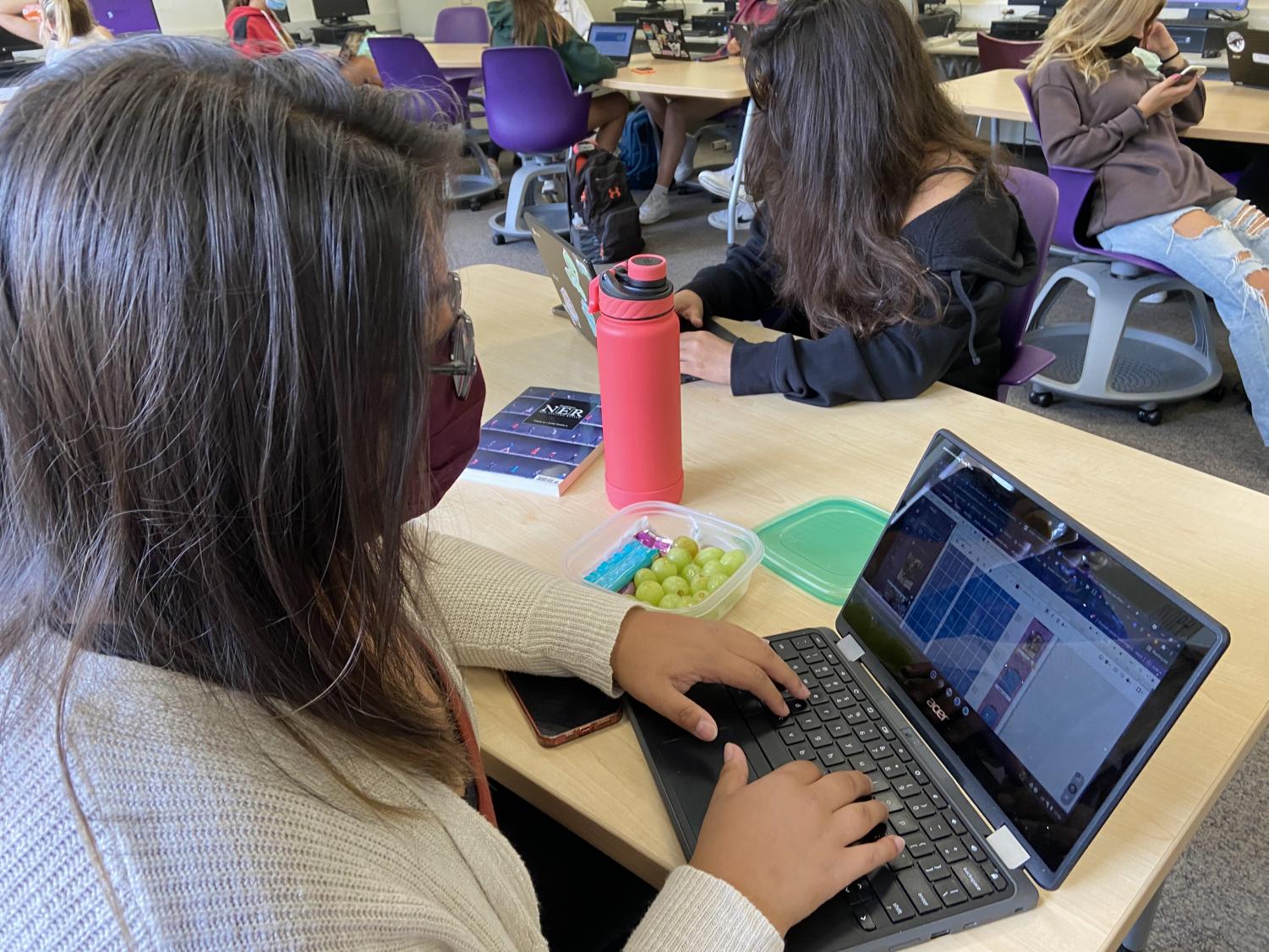The yearbook: from concept to product
October 14, 2021
“Here’s what I hate about it [teaching yearbook class], when the book comes out I always hear complaints and very few compliments. And that’s hard. You have to have tough skin. Once in a while, you’ll get a compliment, but very rarely,” yearbook teacher Kathy Smith said.
Each year, the yearbook class works to put together a product for students to reminisce about the school year. Hundreds of students receive their shiny, crisp yearbooks but not many consider the work it takes to publish a book about the entire student body. In 2018, DGN’s Cauldron Yearbook won top awards at the Northern Illinois Scholastic Press Association (NISPA) conference. While students recently received last year’s yearbook, the process of production for the 2021-2022 school year is already underway.
This year, there are two yearbook classes that constitute about 40 students working to gather information, pictures, and quotes. Students work on the book in four major sections: academics, student life, sports and clubs. Every year, an application is given to those interested in becoming an editor for one of these sections. Each section has two or three editors who review all the pages that fall into their designated category, and all pages then go through the editors-in-chief for a final review.
“Since I am an editor-in-chief this year, I work with Alex White designing page layouts for the separate sections. I also assign certain pages to members of the staff, edit stories or finished pages and help the staff with whatever they need assistance with,” senior and editor-in-chief Charlotte Hansen said.
For those in yearbook class who are not editors, their pages are assigned to them either by Smith or the EICs. At the beginning of the school year, Smith teaches students the basics of the yearbook. However, much of the work after the first few months is done independently by the students.
“Depending on the day, you will find people either in the hallways interviewing students, getting quotes, editing their pages, working with the EICs or writing their stories,” senior and editor-in-chief Alex White said.
Aside from EIC duties, the rest of the yearbook staff is already off to the races working on production.
“Recently we got our first page assignments, now we can start getting quotes and taking pictures to create sidebars and write stories to start constructing the actual contents of the yearbook,” clubs section editor and junior Katelyn Hennelly said.
As far as how the yearbook theme is chosen, it is a collaborative process. At the beginning of each school year, the yearbook classes divide into small groups. Each group comes up with an idea for a theme and then presents them to the class, and the top two ideas are voted on. Then, the winning theme is picked between the two classes.
“[Picking the theme] is the hardest part. It’s the most important part; it’s the most important thing we do because it drives everything,” Smith said.
In thinking about how people are chosen to be featured in the yearbook, the staff takes input from coaches, teachers and other students on who would be best to answer certain questions or be covered in a story. Hansen illustrates how important of a process it is in choosing who to feature in the yearbook.
“We like to cover a wide variety of people, from the stars, to those who don’t get much coverage but deserve it. Every person is important and everyone deserves a spot in the yearbook,” Hansen said.
Once all the quotes have been gathered, the staff begins to write the stories. The section editors and EICs will then go through them and make adjustments. This process takes them anywhere from a week to a month.
In addition, yearbook students must meet “deadlines” about every two months, during which they are required to submit a certain number of completed pages to the program they use called “Yearbook Avenue.”
The process of creating the yearbook is not an easy task. There are many moving parts that must fall into place to publish a high-quality yearbook.
“Sometimes, yearbook [class] can be challenging. For example, if someone doesn’t reply quickly it can be difficult to write captions, or if someone doesn’t want to be in the yearbook it can be hard because we already have a picture assigned to a page,” academics section editor and senior Jess Adamson said.
Aside from the challenges associated with producing the yearbook, the process of working year-round, collaborating with others and getting to see the finalized book at the end of the year is gratifying for the staff and Smith.
“I started teaching yearbook [class] around 2005, so it’s been a long time,” Smith said. “Why I love it [yearbook class] is because kids take the class multiple years so I get to know the students. I also really like design work, I think I’ve really improved my knowledge of layout and design throughout the years. But probably my favorite part is just the kids. They’re awesome and I get to know them really well.”
